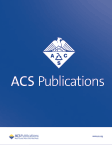求助PDF
{"title":"CT Chest Imaging Using Normalized Join-Count: Predicting Emphysema Progression in the CanCOLD Study.","authors":"Sukhraj Virdee, Wan C Tan, James C Hogg, Jean Bourbeau, Cameron J Hague, Miranda Kirby","doi":"10.1148/radiol.233265","DOIUrl":null,"url":null,"abstract":"<p><p>Background Pre-existing emphysema is recognized as an indicator of future worsening in patients with chronic obstructive pulmonary disease (COPD) when observed through CT imaging. However, it remains uncertain whether additional factors, such as the spatial compactness of CT emphysema, might also serve as predictors of disease progression. Purpose To evaluate the relationship between the compactness of CT emphysema voxels and emphysema progression. Materials and Methods This secondary analysis uses data from the prospective Canadian Cohort Obstructive Lung Disease (CanCOLD) study, examining CT images obtained in participants with and without COPD at baseline and a 3-year follow-up time point (November 2009 to November 2018). Measurements of forced expiratory volume in first second of expiration (FEV<sub>1</sub>) and diffusing capacity of lung for carbon monoxide (DLco) were collected. The normalized join-count (NJC) measurement from baseline CT images and lung density (LD) changes were analyzed. Emphysema progression was defined as an annualized LD change of less than half an SD below the mean of the participants without COPD with no smoking history. Multivariable linear and logistic regression models were used to assess the association between baseline CT NJC measurements and the annualized change in LD, FEV<sub>1</sub>, DLco, and emphysema progression versus nonprogression. Results A total of 524 participants (mean age, 66 years ± 10 [SD]; 293 male) (FEV<sub>1</sub> percent predicted, 88% ± 19; FEV<sub>1</sub>/FVC, 67% ± 9; DLco percent predicted, 105% ± 25) were analyzed, 187 (36%) of whom had COPD. CT NJC was associated with the annualized change in LD (<i>P</i> < .001), FEV<sub>1</sub> (<i>P</i> = .02), and DLco (<i>P</i> = .01). Additionally, CT NJC predicted emphysema progression versus nonprogression (odds ratio, 2.24; 95% CI: 1.37, 3.50; <i>P</i> < .001). Conclusion The spatial distribution, or \"compactness,\" of CT emphysema voxels predicted emphysema progression in individuals with and without COPD. ClinicalTrials.gov Identifier: NCT00920348 © RSNA, 2024 <i>Supplemental material is available for this article.</i></p>","PeriodicalId":12,"journal":{"name":"ACS Chemical Health & Safety","volume":null,"pages":null},"PeriodicalIF":2.9000,"publicationDate":"2024-07-01","publicationTypes":"Journal Article","fieldsOfStudy":null,"isOpenAccess":false,"openAccessPdf":"","citationCount":"0","resultStr":null,"platform":"Semanticscholar","paperid":null,"PeriodicalName":"ACS Chemical Health & Safety","FirstCategoryId":"3","ListUrlMain":"https://doi.org/10.1148/radiol.233265","RegionNum":0,"RegionCategory":null,"ArticlePicture":[],"TitleCN":null,"AbstractTextCN":null,"PMCID":null,"EPubDate":"","PubModel":"","JCR":"Q2","JCRName":"PUBLIC, ENVIRONMENTAL & OCCUPATIONAL HEALTH","Score":null,"Total":0}
引用次数: 0
引用
批量引用
Abstract
Background Pre-existing emphysema is recognized as an indicator of future worsening in patients with chronic obstructive pulmonary disease (COPD) when observed through CT imaging. However, it remains uncertain whether additional factors, such as the spatial compactness of CT emphysema, might also serve as predictors of disease progression. Purpose To evaluate the relationship between the compactness of CT emphysema voxels and emphysema progression. Materials and Methods This secondary analysis uses data from the prospective Canadian Cohort Obstructive Lung Disease (CanCOLD) study, examining CT images obtained in participants with and without COPD at baseline and a 3-year follow-up time point (November 2009 to November 2018). Measurements of forced expiratory volume in first second of expiration (FEV1 ) and diffusing capacity of lung for carbon monoxide (DLco) were collected. The normalized join-count (NJC) measurement from baseline CT images and lung density (LD) changes were analyzed. Emphysema progression was defined as an annualized LD change of less than half an SD below the mean of the participants without COPD with no smoking history. Multivariable linear and logistic regression models were used to assess the association between baseline CT NJC measurements and the annualized change in LD, FEV1 , DLco, and emphysema progression versus nonprogression. Results A total of 524 participants (mean age, 66 years ± 10 [SD]; 293 male) (FEV1 percent predicted, 88% ± 19; FEV1 /FVC, 67% ± 9; DLco percent predicted, 105% ± 25) were analyzed, 187 (36%) of whom had COPD. CT NJC was associated with the annualized change in LD (P < .001), FEV1 (P = .02), and DLco (P = .01). Additionally, CT NJC predicted emphysema progression versus nonprogression (odds ratio, 2.24; 95% CI: 1.37, 3.50; P < .001). Conclusion The spatial distribution, or "compactness," of CT emphysema voxels predicted emphysema progression in individuals with and without COPD. ClinicalTrials.gov Identifier: NCT00920348 © RSNA, 2024 Supplemental material is available for this article.
使用归一化连接计数的 CT 胸部成像:预测 CanCOLD 研究中的肺气肿进展。
背景 通过 CT 成像观察,已有的肺气肿被认为是慢性阻塞性肺病(COPD)患者未来病情恶化的指标。然而,CT 肺气肿的空间致密性等其他因素是否也可作为疾病进展的预测因素,目前仍不确定。目的 评估 CT 肺气肿体节紧密度与肺气肿进展之间的关系。材料和方法 这项二次分析使用了前瞻性加拿大队列阻塞性肺病(CanCOLD)研究的数据,检查了患有和未患有慢性阻塞性肺病的参与者在基线和 3 年随访时间点(2009 年 11 月至 2018 年 11 月)获得的 CT 图像。研究人员收集了第一秒用力呼气容积(FEV1)和一氧化碳肺弥散容量(DLco)的测量数据。分析了基线 CT 图像的归一化连接计数(NJC)测量值和肺密度(LD)变化。肺气肿进展的定义是年化 LD 变化低于无慢性阻塞性肺病且无吸烟史的参与者平均值的半 SD。多变量线性回归和逻辑回归模型用于评估基线 CT NJC 测量值与 LD、FEV1、DLco 年化变化以及肺气肿进展与未进展之间的关系。结果 共分析了 524 名参与者(平均年龄为 66 岁 ± 10 [SD];293 名男性)(FEV1 预测百分比为 88% ± 19;FEV1/FVC 预测百分比为 67% ± 9;DLco 预测百分比为 105% ± 25),其中 187 人(36%)患有慢性阻塞性肺病。CT NJC 与 LD(P < .001)、FEV1(P = .02)和 DLco(P = .01)的年化变化相关。此外,CT NJC 还能预测肺气肿的进展与未进展(几率比为 2.24;95% CI:1.37,3.50;P <.001)。结论 CT 肺气肿体素的空间分布或 "紧密度 "可预测 COPD 患者和非 COPD 患者的肺气肿进展。ClinicalTrials.gov Identifier:NCT00920348 © RSNA, 2024 本文有补充材料。
本文章由计算机程序翻译,如有差异,请以英文原文为准。


